Regulation of International Financial Markets and International Banking
This research group analyses causes and consequences of banks' international activities and the regulatory framework they operate in.
Internationally active banks can facilitate an efficient international allocation of capital and provide channels for international risk sharing. But they can also be a source of financial instabilities themselves, thus contributing to international contagion and risk-shifting. This is one reason for the current re-regulation of international banking.
The research group contributes to the literature in three ways. First, the group empirically analyses the channels through which shocks are transmitted by internationally active banks. Second, the group analyses the build-up of aggregate imbalances in integrated banking markets and resulting consequences for the real economy. Third, the group analyses the impact of changes in banking supervision and regulation on (inter)national activities of banks, with a special focus on the European integration process.
IWH Data Project: International Banking Library
Research Cluster
Economic Dynamics and StabilityYour contact

Mitglied - Department Financial Markets
EXTERNAL FUNDING
07.2017 ‐ 12.2022
The Political Economy of the European Banking Union
European Social Fund (ESF)
Causes of national differences in the implementation of the Banking Union and the resulting impact on financial stability.
01.2015 ‐ 12.2017
Dynamic Interactions between Banks and the Real Economy
German Research Foundation (DFG)
Refereed Publications
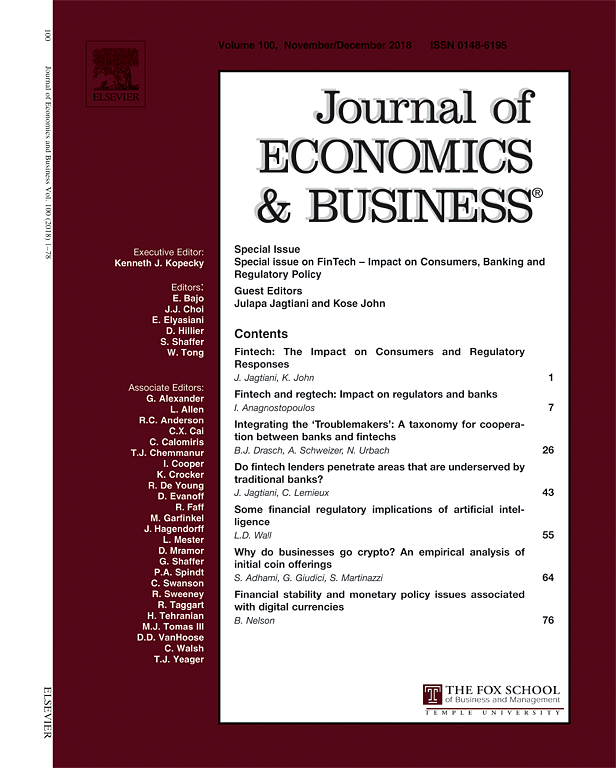
Does It Pay to Get Connected? An Examination of Bank Alliance Network and Bond Spread
in: Journal of Economics and Business, forthcoming
Abstract
This paper examines the effects of bank alliance network on bonds issued by European banks during the period 1990–2009. We construct six measures capturing different dimensions of banks’ network characteristics. In opposition to the results obtained for non-financial firms, our findings indicate that being part of a network does not create value for bank’s bondholders, indicating a dark side effect of strategic alliances in the banking sector. While being part of a network is perceived as a risk-increasing event by market participants, this negative perception is significantly lower for the larger banks, and, to a lesser extent, for the more profitable banks. Moreover, during crisis times, the positive impact on bond spread of a bank’s higher centrality or of a bank’s higher connectedness in the network is stronger, indicating that market participants may fear spillover effects within the network during periods of banks’ heightened financial fragility.
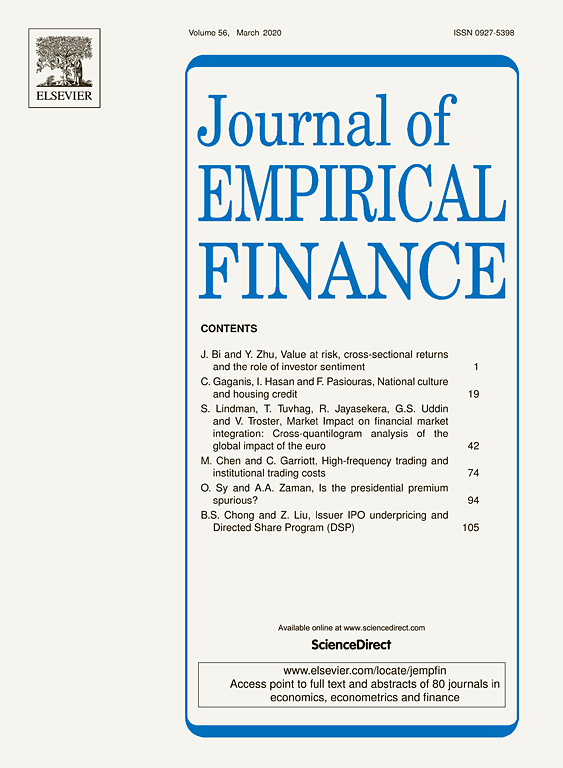
Ownership Structure and the Cost of Debt: Evidence From the Chinese Corporate Bond Market
in: Journal of Empirical Finance, September 2023
Abstract
Drawing upon evidence from the Chinese corporate bond market, we study how ownership structure affects the cost of debt for firms. Our results show that state, institutional and foreign ownership formats reduce the cost of debt for firms. The benefits of state ownership are accentuated when the issuer is headquartered in a province with highly developed market institutions, operates in an industry less dominated by the state or during the period after the 2012 anti-corruption reforms. Institutional ownership provides the most benefits in environments with lower levels of marketization, especially for firms with low credit quality. Our evidence sheds light on the nexus of ownership and debt cost in a political economy where state-owned enterprises (SOEs) and non-SOEs face productivity and credit frictions. It is also illustrative of how the market environment interacts with corporate ownership in affecting the cost of bond issuance.
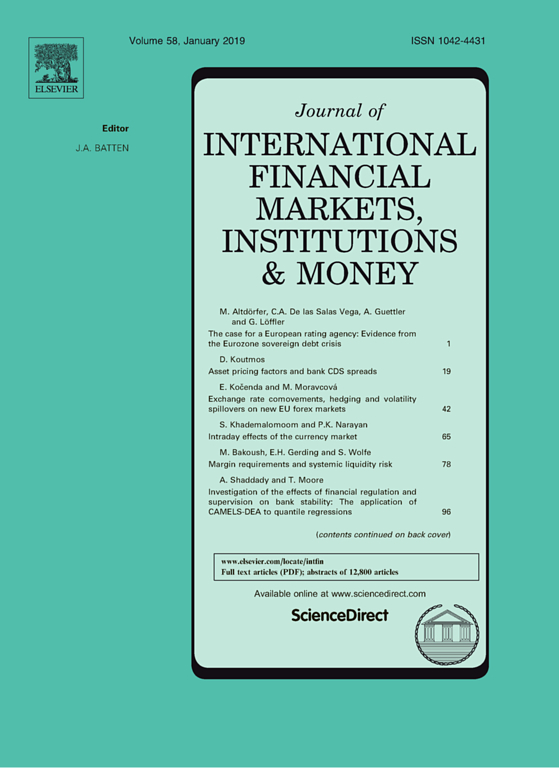
Cultural Values of Parent Bank Board Members and Lending by Foreign Subsidiaries: The Moderating Role of Personal Traits
in: Journal of International Financial Markets, Institutions and Money, March 2023
Abstract
In this study, we investigate whether the cultural values of a parent bank’s board members affect lending by the bank’s foreign subsidiaries and how this influence is moderated by the board members’ personal traits. Using a new dataset on foreign-owned banks and their parent companies, we find that average individualism, uncertainty avoidance, and indulgence within parent bank boards significantly impact lending by foreign subsidiaries. We establish that different sensitivities of female and male directors modify the relevance of individual cultural dimensions in lending by foreign bank subsidiaries. Moreover, we show that parent bank directors’ cultural values have a stronger impact on lending by the bank’s foreign subsidiaries when those directors have enough time to fulfill their duties and possess higher ownership stakes in the parent companies.
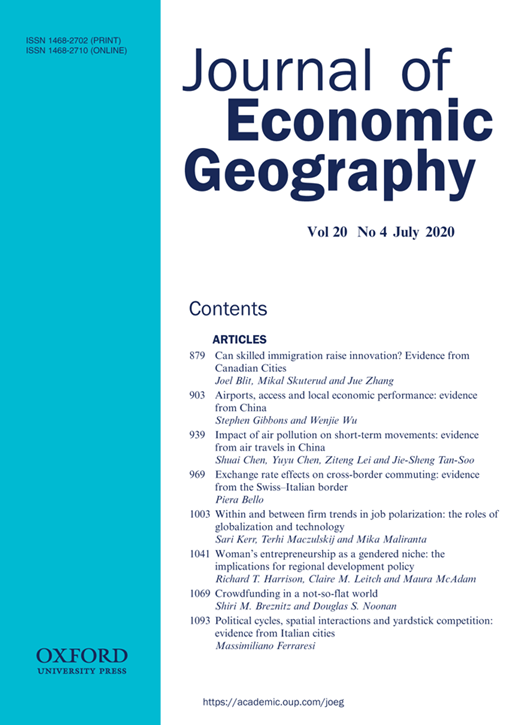
The Geography of Information: Evidence from the Public Debt Market
in: Journal of Economic Geography, No. 1, 2023
Abstract
nWe investigate the link between the spatial concentration of firms in large, central metropolitans (i.e. urban agglomeration) and the cost of public corporate debt. Looking at bond issues over the period 1985–2014, we find that bonds issued by companies headquartered in urban agglomerates have lower at-issue yield spreads than bonds issued by firms based in remote, sparsely populated areas. Measures of the count of institutional bondholders in a firm’s vicinity confirm that the spatial cross-sectional variation in bond spreads is driven by the proximity of metropolitan firms to large concentrations of institutional investors. Our results are robust to controls for firm productivity and governance, analyst following, and exogenous shocks to institutional investor attention. The effect of headquarters location on bond spreads is especially pronounced for more difficult to value, speculative-grade bonds, bonds issued by smaller, less visible firms and bonds issued without protective covenants. Overall, we provide evidence that the geographical distribution of firms and investors generates a corresponding distribution of value-relevant, firm-level information that affects its cost of capital.
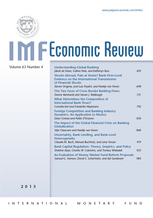
Financial Linkages and Sectoral Business Cycle Synchronization: Evidence from Europe
in: IMF Economic Review, December 2022
Abstract
We analyze whether financial integration leads to converging or diverging business cycles using a dynamic spatial model. Our model allows for contemporaneous spillovers of shocks to GDP growth between countries that are financially integrated and delivers a scalar measure of the spillover intensity at each point in time. For a financial network of ten European countries from 1996 to 2017, we find that the spillover effects are positive on average and much larger during periods of financial stress, pointing towards stronger business cycle synchronization. Dismantling GDP growth into value added growth of ten major industries, we observe that spillover intensities vary significantly. The findings are robust to a variety of alternative model specifications.
Working Papers

Friend or Foe? Crowdfunding Versus Credit when Banks are Stressed
in: IWH Discussion Papers, No. 8, 2015
Abstract
Does bank instability push borrowers to use crowdfunding as a source of external finance? We identify stressed banks and link them to a unique, manually constructed sample of 157 new ventures seeking equity crowdfunding. The sample comprises projects from all German equity crowdfunding platforms since 2011, which we compare with 200 ventures that do not use crowdfunding. Crowdfunding is significantly more likely for new ventures that interact with stressed banks. Innovative funding is thus particularly relevant when conventional financiers are facing crises. But crowdfunded ventures are generally also more opaque and risky than new ventures that do not use crowdfunding.
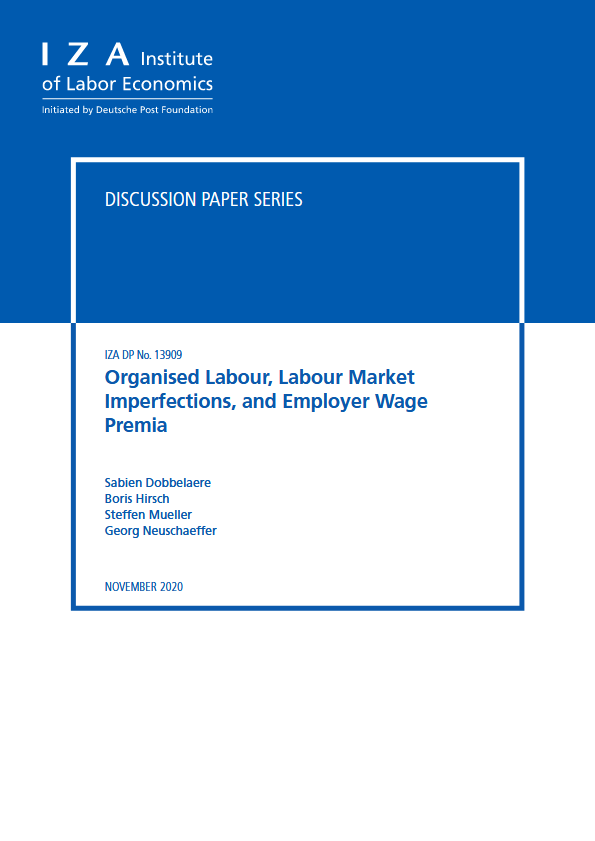
Explaining Regional Disparities in Housing Prices across German Districts
in: IZA Institute of Labor Economics, March 2022
Abstract
Over the last decade, German housing prices have increased unprecedentedly. Drawing on quality-adjusted housing price data at the district level, we document large and increasing regional disparities: growth rates were higher in 1) the largest seven cities, 2) districts located in the south, and 3) districts with higher initial price levels. Indications of price bubbles are concentrated in the largest cities and in the purchasing market. Prices seem to be driven by the demand side: increasing population density, higher shares of academically educated employees and increasing purchasing power explain our findings, while supply remained relatively constrained in the short term.














